Department of Biomedicine

Newsletter January 2023
2 Editorial Success Story
Dear All,

Content
Editorial
Success Story
Vision and Mission
PhD Club
Research Group at a Glance
Publications
Congratulations
Events
New Colleagues
I’m writing this text shortly after the yearly visit of our Scientific Advisory Board (SAB) in January. It was rewarding for Andrea Ottolini and myself to receive positive feedback about the operational and scientific developments at the DBM and it was constructive to discuss strategies for further advances. The SAB was enthusiastic about the quality of science presented by the leaders of the assessed research groups (congratulations to them!) and positively remarked the distinct ‘cut’, combining fundamental and translational aspects. In listening to the excellent presentations, I must confess that I felt proud (although with no personal merit…) and privileged to be part of the DBM!
This Newsletter portraits some visual impressions of the Symposium with the SAB and proposes the text developed by the Communication Ressort about the DBM Vision and Mission: do you find that it effectively captures our identity? Among others, you will have the chance to learn what is unique about the histology core facility at the DBM and receive an update on the research groups led by Volker Spindler and Alexander Navarini. You may also receive an update on the activities of the DBM PhD Club and on the launch of the Green Labs Program.
From this issue, publications are not any longer listed in order of impact factor, in line with the San Francisco Declaration on Research Assessment (DORA), supported by the Swiss National Science Foundation. Ideas on how to order published papers in our Newsletter are welcome… until then, try to judge yourself their quality and relevance by clicking on the links!
I’m looking forward to meeting many of you at the upcoming Plenary Assembly on March 23!
Ivan Martin Director of the Department of Biomedicine
4
Editorial

Content
DBM Success Story
The importance of magnesium for the immune system in fighting infection and cancer.
Background
Despite being the second most-abundant mineral in the human body, the biological significance of magnesium, and in particular of extracellular magnesium, remains poorly understood. Notably, hypomagnesemia—reflective of magnesium deficiency—is the most underdiagnosed electrolyte abnormality.
Research Question
Success Story
Vision and Mission PhD Club
Research Group at a Glance
Publications
Editorial Congratulations
Events
New Colleagues
Recent research has shown that minerals play a crucial role in regulating immune cell functions. For instance, genetic defects in iron or zinc metabolism cause immunodeficiencies. Moreover, high local abundance of sodium chloride results in autoimmune-prone differentiation of T cells, while high levels of intratumoral potassium inhibits their function. In our study, we aimed to investigate whether extracellular magnesium may impact immune cell functionality.
Study Method
Applying a spectrum of in vitro and in vivo tools, we discovered that effector and memory CD8 T cells require a magnesium-rich environment for activation and the subsequent elimination of infected or malignant cells. More specifically, magnesium is important for the function of LFA-1. This cell surface molecule acts as a docking site and plays a key role in the activation of T cells. During activation, LFA-1 converts from a bent/inactive to an extended/active conformation. By binding to LFA-1, extracellular magnesium stabilizes the active conformation of LFA1, which enables a stable interaction between T cells and target cells, thereby supporting T cell effector function.
Importance of the Study / Relevance for Cancer Patients
The observation that magnesium is essential for efficient T cell functioning may be relevant in the context of modern cancer immunotherapies. In experimental models, we have shown that elevating the local concentration of magnesium in tumors enhances cancer-directed T cell immunity. In retrospective analyses, low serum magnesium levels associated with faster disease progression and shorter overall survival in lymphoma patients adoptively transferred with CAR T cells, as well as lung cancer patients treated with immune checkpoint inhibitors.
6
Outlook
Lung cancer patients with advanced disease are treated with a platinum-based chemotherapy in combination with immune checkpoint inhibition. Hypomagnesemia is a common side effect of platinum-based chemotherapy. Based on our findings, we hypothesize that the efficacy of immunotherapy could be undermined by chemotherapy-induced hypomagnesemia and that the effector function of cancer-directed T cells can be improved by magnesium supplementation. To test this idea, a multicenter, prospective, and placebo-controlled trial will be performed, combining magnesium substitution with standard of care chemoimmunotherapy in lung cancer patients (in collaboration with the Swiss Group for Clinical Cancer Research [SAKK]).

Contributors
Our project benefited from a strong collaborative network and highlevel scientific expertise across research groups based in departments at both the University Hospital of Basel and the University of Basel. Contributions made by the Zippelius lab and the King lab were particularly instrumental to the success of the study. The outstanding support provided by the various core facilities also deserves specific mention. Furthermore, collaborators both within Switzerland (Geneva, Lausanne) and abroad (Austin) worked tirelessly alongside us. As the long list of authors attests, this project was a true team effort.
A short Overview of the Immunobiology Lab
The research group led by Christoph Hess focuses on translational aspects of lymphocyte function and its metabolic basis. The lab’s objective is to understand patients suffering from disorders of immunometabolic regulation.
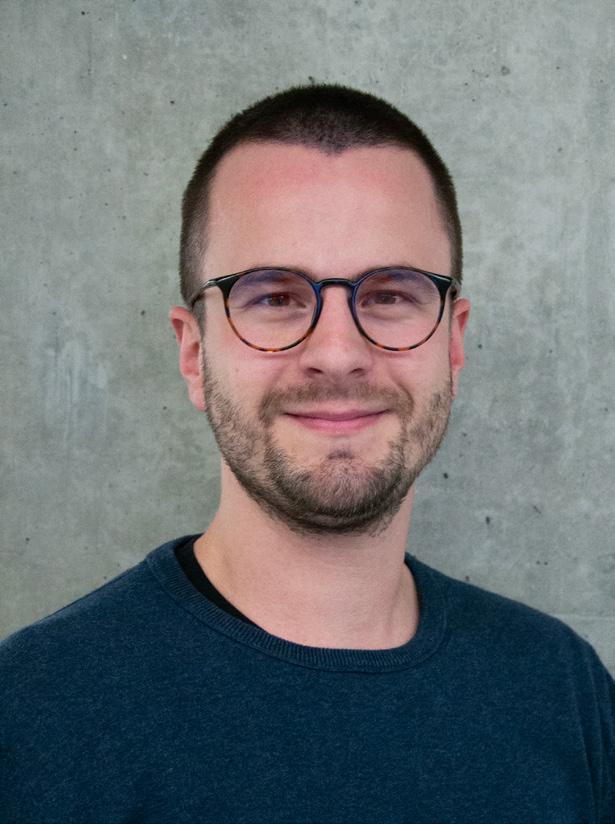
Contact:
https://biomedizin.unibas.ch/en/research/researchgroups/hess-lab/
Immunofluorescent image depicting T cells (blue) attacking tumor cells (white) by forming an immune synapse with LFA-1 (open headpiece conformation – labeled in red). Our work identified extracellular magnesium as a critical immune modulator of CD8+ T cells.
 Jonas Lötscher
Montage of Z-stack illustrating T cells (blue) attacking tumor cells (white) by forming an immune synapse with LFA-1 (open headpiece conformation – labeled in red).
Jonas Lötscher
Montage of Z-stack illustrating T cells (blue) attacking tumor cells (white) by forming an immune synapse with LFA-1 (open headpiece conformation – labeled in red).
8
Research
Vision and Mission PhD Club
Group at a Glance
New Colleagues
Vision and Mission

The Communication and Outreach Ressort (COR) in cooperation with communication experts have defined the Vision and Mission statement of the Departement of Biomedicine. The text has already been implemented in the DBM Website.


Department of Basel and clinical scientists disease and of patients in The Department science, providing generation of state-of-the-art ment, it nurtures
The Department close vicinity industrial biomedical pe’s top life science
10
The
Content Publications Research Group at a Glance Vision and Mission PhD Club Editorial Congratulations Success Story Events
Department of Biomedicine is a joint venture of the University and the University Hospitals Basel. It unites basic and scientists to advance our understanding of health and to develop pioneering therapies benefiting the lives in areas of unmet need.
Department fosters curiosity-driven and interdisciplinary providing a stimulating environment to train the next of scientific leaders in all areas of biomedicine. With state-of-the-art facilities and a cutting-edge research environnurtures a spirit of innovation.
Department is strategically situated in the heart of Basel in vicinity to the university hospitals, to other academic and biomedical institutions, contributing to one of Euroscience hubs.
DBM PhD Club
The DBM PhD Club is a committee of PhD students from different research groups under the guidance of Prof. Susan Treves. Our main goal is to enhance scientific dialogue and social interactions among PhD students, as well as to provide support and relevant information to make their projects more productive and gratifying. As a team, we guide students through administrative procedures and help them navigate the paperwork necessary to enroll in the DBM International PhD Program. We also organize scientific and social events for PhD students at the DBM, such as the DBM PhD Retreat, Career Day, the Summer BBQ, the Fall Hike, and the Christmas Party. In addition, we keep PhD students at the DBM informed about activities organized by other PhD clubs at the University of Basel, particularly the Pharmazentrum and Biozentrum PhD clubs. We have recently initiated a PhD mentoring program to facilitate the administrative process that all new students have to go through, with the assistance of senior PhDs who serve as mentors. This is a completely voluntary program and interested students are welcome to sign up as either a mentee or a mentor.
The annual Scientific PhD Retreat of 2022 took place in the beautiful Quarten region at the Neu-Schönstatt hotel, in the canton of St. Gallen, Switzerland. Participation in the PhD retreat is mandatory for DBM PhD students, since it is important not only for acquiring the credit points and animal training days, but also provides the opportunity to interact with and learn from other students in similar or different areas of research, as well as opening the door for potential collaboration in the future. In 2022, the retreat opened with Prof. Susan Treves welcoming the participants, which was then followed by a mini-symposium with eminent speakers representing the four focal areas of research at the DBM: PD Dr. Marco Alves, Institute of Virology and Immunology, University of Bern; Prof. Dr. Thomas Karikari, Department of Psychiatry and Neurochemistry, University of Gothenburg and University of Pittsburgh; Prof. Dr. Therese Sørlie, Institute for Cancer Research, Oslo University Hospital; and Prof. Dr. Luc Bertrand, Institute of Experimental and Clinical Research, University of Louvain. The lively scientific discussions involving both students and speakers continued at the subsequent apéro. On the second day, we attended a keynote lecture by Prof. Dr. David J Glass, Vice-President and Director, Regeneron Pharmaceuticals, New York, via Zoom. The program also included oral and poster presentations of the PhD projects of students from different research groups. The best talks and posters were awarded a cash prize and golden pipette in recognition. The scientific portion of the program was followed by a campfire and BBQ dinner.
12
Content Publications Research Group at a Glance Vision and Mission PhD Club Editorial Congratulations Success Story Events
New Colleagues
We also organized the yearly DBM PhD Club fall hike to the Creux Du Van, a day trip that the students enjoyed and which finished with a small apéro. The Christmas party 2022, which was the last and most important of the club’s social events, took place at the Verso Bar, Petersgraben. We served Glühwein and enjoyed fun activities, like DJ/music and dancing. The PhD students from different institutes in Basel came together and we successfully brought the year 2022 to a close with a festive and eventful evening. If you have questions or would like to find out more, feel free to reach out to us at https://phdclub.biomedizin.unibas.ch.


Madhuri Manivannan, PhD Student
DBM PhD Club Committee:
Susan Treves (DBM PhD Coordinator): susan.treves@unibas.ch
Madhuri Manivannan: madhuri.manivannan@unibas.ch
Mali Cristina Coray: m.coray@unibas.ch
Julia Hirsiger: julia.hirsiger@unibas.ch
Elisabeth Pössnecker: elisabeth.poessnecker@unibas.ch
Cécile Demarez: cecile.demarez@unibas.ch
Nicolas Kramer: nicolas.kramer@unibas.ch
Subashree Srinivasan: subashree.srinivasan@unibas.ch
Stephanie Meier: stephanie.meier@unibas.ch
Jochen Schmid: jochen.schmid@unibas.ch
Simon Garaude: simon.garaude@unibas.ch
Research Group at a Glance Cell Adhesion (Spindler Lab)
A Quick Overview of Our Research
Our main interest is to understand how cells connect to form barriers and maintain tissue homeostasis. Dysfunctional adhesion between cells causes, or contributes to, a plethora of severe diseases, ranging from developmental defects, autoimmune blistering skin diseases, and cardiomyopathies to cancer—to name just a few examples. One of the structures that we are particularly interested in is a cell junction complex termed the «desmosome.» These structures act as spot welds, connecting neighboring cells together and ensuring resilience against mechanical stress. Accordingly, desmosomes are most abundant in the epidermis and the heart muscle.
We study how the different building blocks of the junction contribute to its overall function and adhesive properties, how desmosomes modulate cellular signaling and behavior, and how desmosomes adapt to changes in the context of mechanical stress. Moreover, we investigate how dysfunctional adhesion contributes to the blistering skin disease pemphigus and to Arrhythmogenic Cardiomyopathy, a heart disease that particularly affects young athletes. Besides elucidating the mechanisms underlying dysfunctional adhesion in these diseases, we aim to identify ways of modulating intercellular adhesion, as a novel therapeutic approach.
Highlights, Breakthroughs and Current Projects
Our work on the basic biology of desmosomes has made a substantial contribution to the current understanding of desmosome function being dynamically adapted to changing mechanical forces, rather than simply acting as a glue holding cells together. We have identified distinct functions of the cytoskeleton which are required for these adaptions. For example, the correct organization of the acting network underlying the cell membrane is necessary to ensure desmosome remodeling in response to increased mechanical forces.
Importantly, such regulatory mechanisms are altered in disease. We have outlined in multiple studies how dysfunction in adhesion dynamics contributes to the blistering skin disease pemphigus. In this autoimmune disease, patients develop autoantibodies against desmosomal components in the epidermis and mucous membranes of the oral cavity, which cause altered desmosome turnover.
14
Content Publications Research Group at a Glance Vision and Mission PhD Club Editorial Congratulations Success Story Events New Colleagues
In one of our recent projects, we have identified and characterized a point mutation that abrogates adhesion by desmosomes. Interestingly, the corresponding mouse model exhibits a phenotype that resembles the major hallmarks of Arrhythmogenic Cardiomyopathy. In this disease, a large variety of mutations in desmosomal molecules cause arrhythmia and cardiomyocyte death, with replacement by connective tissue and fat. Our mouse model identified dysfunctional adhesion as a common cause for Arrhythmogenic Cardiomyopathy and appears to be an excellent tool to study disease mechanisms. Using this model, we identified a pathway in which loss of adhesion and altered desmosome turnover causes fibrotic remodeling in the heart.
We are currently exploiting the plasticity of desmosomes to «tune» adhesion. For example, we are applying CRISPR whole genome screening methods to identify regulatory mechanisms underlying desmosome function and to elucidate novel disease modifiers. We have also established a screen to quantify intercellular adhesion in high-throughput format. We are now applying this approach to screen compound libraries for substances that modulate intercellular adhesion.
Content
Research Group at a Glance Cell Adhesion (Spindler Lab)
Our Vision for the Future
Editorial
Success Story
Vision and Mission
PhD Club
Research Group at a Glance
Publications
Congratulations
Events
New Colleagues
Our central vision is to understand the dynamics of intercellular adhesion and how these are adapted to actual requirements. Focusing on desmosomes, we believe that a better understanding of the functions of this structure will provide us with opportunities to modulate intercellular adhesion. This is particularly relevant when it comes to identifying tailored treatments for diseases for which no specific therapy exists so far—such as Arrhythmogenic Cardiomyopathy.
Team Spirit – Introduction of Us
Our team resembles a cell junction. We are diverse and composed of dynamic individuals with different strengths. Together, we support each other and assemble into higher-order structures in order to reach our primary goals. Moreover, just like different cell junctions, which build functional networks to provide homeostasis, our team collaborates with many groups both inside and outside the DBM to answer complex research questions.
We are
Volker Spindler Research Group Leader
Camilla Schinner Project Leader
Henriette Franz Research Associate
Maitreyi Rathod Postdoctoral Fellow
Ramón Castellanos-Martinez Postdoctoral Fellow
Vivien Beyersdorfer PhD Student
Karen Leal Fischer PhD Student
Aude Zimmermann Technician
Pauline Hanns Technician
16
Contact: https://biomedizin.unibas.ch/en/research/research-groups/spindler-lab/

Content
Research Group at a Glance Skin Biology (Navarini Lab)
A Quick Overview of Our Research
Editorial
Success Story
Vision and Mission
PhD Club
Research Group at a Glance
Publications
Congratulations
Events
New Colleagues
The skin is often involved in and damaged by immunological reactions, such as drug rashes and innate immune disorders. We have a longstanding interest in neutrophilic reactions involving the skin, both those caused by drugs and those caused by idiopathic conditions. We have identified IL1 cytokines as drivers of numerous such conditions, both on a genetic level and in secreted proteins, and have contributed to IL-36 blockers being translated in the clinic. The skin also serves as a barrier against numerous environmental hazards, including ultraviolet light, microbes, and chemicals. Disturbances of the epidermal barrier are the cause of many skin diseases, whether genetic, immunological, or traumatic in nature. Such skin conditions are difficult to treat and often become chronic, because we lack deep understanding of the skin barrier’s pathophysiology.
Our research thus aims to arrive at a better understanding of cutaneous immune pathologies, with an emphasis on cutaneous adverse drug reactions and neutrophilic dermatoses, as well as of the conditions leading to epidermal structural and/or pigmentary alterations. Our goal is to find broadly applicable mechanistic insights, as well as novel treatment approaches. Our research is mainly carried out on biological material from clinically well-characterized patients. We are able to do so thanks to our proximity to the dermatology clinic and our biobank, as well as to collaborations with experts in major centers in Switzerland and abroad.
Highlights, Breakthroughs and Current Projects
There are multiple reasons for the loss of epidermal integrity, including genetic causes that alter the physiology of keratinocytes, attacks arising from the environment, autoimmune/autoinflammatory reactions, and toxicity caused by certain drugs. Our research aims to arrive at a better understanding of the mechanisms of skin pathologies involving keratinocytes as initiators, amplifiers, and targets. Our laboratory’s recent development of three-dimensional structures recapitulating a human epidermis (human epidermal organoids, HEOs), combined with the obtention of biological material from informed, consenting patients seen in our department, allows us to work with unique study models of physiopathology and to screen molecules of therapeutic interest. This is done along two main axes:
18
(1) Structural defects of the epidermis that have genetic cause, as exemplified by Darier‘s disease: Darier’s disease is an autosomal dominant disease involving defective cell adhesions due to altered calcium trafficking to the endoplasmic reticulum. ER stress is possibly the major component in this severe disease, for which there is currently no satisfactory treatment. As monolayer cell cultures do not recapitulate the physiology of a differentiated epidermis and no animal model of Darier’s disease exists, patient-derived HEOs will enable us to study the factors leading to ER stress and its downstream molecular consequences on keratinocyte differentiation and adhesion in these patients, using, among other things, transcriptomic, spatial proteomic, and highdefinition imaging approaches.
(2) Medication-induced skin toxicities: Severe cutaneous drug reactions (SCAR) are abnormal immune reactions targeting the skin. They can produce reactions ranging from simple rashes to massive detachment of the epidermis. We have recently shown that some of these reactions are independent of adaptive immune cells, but, for all SCAR, the initial events involving innate immunity and keratinocytes are poorly understood. Our previous work suggested that cytokines of the IL-1 family play a major role in the epidermis in response to culprit drugs, but their effects on important components of cutaneous immunity, such as macrophages and keratinocytes, have yet to be investigated. Using models based on patient-derived HEOs and co-culture systems with myeloid and lymphoid cells, we intend to study the early events in the drug-induced immune response using transcriptomic, spatial proteomic, and modern imaging techniques.
Research Group at a Glance
Skin Biology (Navarini Lab)
Our Vision for the Future
Editorial
Success Story
Vision and Mission
PhD Club
Since we are able to produce many thousands of epidermal organoids from any patient skin biopsy for experimental investigation, we aim to evaluate and implement a personalized medicine pipeline. This means that we will systematically produce organoids from biopsies of lesional skin and then describe whether the disease is reproducible with and without the addition of co-cultured immune cells, whether known treatments normalize the pathologic phenotype in vitro, and, ultimately, whether these responses can be back-translated to the clinic. The diseases studied could include pemphigus vulgaris, palmoplantar keratosis, and ichthyoses, to name just a few. Our system will make it possible to evaluate disease-eliciting factors and treatment strategies in vitro.
Team Spirit – Introduction of Us
We are scientists and clinicians fascinated by the skin, our largest organ, which is confronted with numerous forms of aggression and must protect the rest of our body. Hailing from different backgrounds, we complement each other perfectly in achieving our goals. In addition to our daily professional interactions, we have developed a sense of camaraderie and a very pleasant working atmosphere.
Congratulations
Events
New Colleagues
20
Content Publications Research Group at a Glance
We are
Alexander A. Navarini
Research Group Leader

Emmanuel Contassot Project Leader
Rishika Agarwal PhD student
Tanja Dittmar Technician
Naomi Müller Master student
Elisabeth Roider Dermatologist
Alina Müller Dermatologist
Nathalie Staub MD student
Isabelle Ledergerber MD student
Contact: https://biomedizin.unibas.ch/en/research/research-groups/navarini-lab/
Events
Core Facility at a Glance Histology
A Quick Overview of Our Facility
The Histology Core Facility is a centralized, shared resource belonging to the Department of Biomedicine, providing access to instruments, technologies, services, and expert consultation in the field of histology. The facility is committed to training users and aims to be a hub for the sharing of knowledge in this field.
Highlights, Breakthroughs and Current Projects
The facility was established in 2019 to meet the growing need for a centralized laboratory where histology experiments could be performed.
The basic functional unit of the facility is the DIY platform, where all users can perform their experiments autonomously, under the supervision of and supported by the staff.
Moreover, in recent years, the facility staff has created several services enabling histology experiments to be carried out in accordance with the highest quality standards. These services are available to all DBM groups, as well as to other local research institutions interested in outsourcing their experiments.
The facility is equipped with stateoftheart technology in the field (e.g., a Roche Ventana Discovery Ultra auto stainer, a Gemini AS slide stainer, and a TMA Master II tissue micro-arrayer, with more to come), enabling all kinds of experiments.
Since 2019, the facility also supports and provides services to the Maintenance Therapy with Aromatase Inhibitor in Epithelial Ovarian Cancer (MATAO) clinical trial, a multi-center international phase III clinical trial for the treatment of ovarian cancer.
What is so Special and Unique about the DBM histology facility?
New Colleagues
The Histology Core Facility is one of the few core facilities in Switzerland to provide access to histology equipment to end users (free of charge!), and not only to specialized members of staff. The facility currently accommodates around 170 DBM users, generating roughly 20,000 booking hours a year. The facility’s work is centered around users’ needs. Both its current offer and planned future developments take into account the scientific evolution of the DBM’s groups.
The staff tries to anticipate their needs, in order to enable cutting-edge and innovative research approaches. This is possible thanks to the continuous exchange of information and knowledge between users and staff.
22
Publications
Vision
PhD
Congratulations Success
Content
Research Group at a Glance
and Mission
Club Editorial
Story
The facility is under the direction of the DBM Scientific Steering Committee, which supervises and directs both its current and its future activities. Additionally, it is regularly evaluated by an external scientific advisory board, which assesses its scientific contribution to DBM activities.
2 Cryostats
1 Vibratome
1
1 Image analysis workstation (HALO software)
1
1 Gemini AS Slide Stainer
3 Bench microscopes
1 BF and FL microscope
Facility Head: Diego Calabrese

Facility Staff: Mylène Toranelli


Guest Staff: Feruza Ushurova
Contact: https://biomedizin.unibas.ch/en/core-facilities/histology/
Tissue processors
Tissue embedding station
Semi-automatic microtomes
Manual microtome
Microwave tissue processor
Thermobrite FISH incubator
Slide and one cassette printer
Computerized Tissue Microarrayers
Coverslipper
Equipment 1
1
3
1
1
1
1
1
1
Slide scanner
Roche Ventana Discovery Ultra auto stainer
24 Publications Congratulations Events
Content
Publications
All publications we have received from the period between July and December 2022. The publications are listed by date.
Safe administration of subsequent mRNA COVID-19 vaccine doses following a possible allergic reaction to the first dose. Roth MS, Chantraine S, Morales Mateluna CA, Hartmann K*, Berger CT* (*equally). The Journal of the European Academy of Dermatology and Venereology. J Eur Acad Dermatol Venereol. 2022 Nov;36(11):e880-e883. doi: 10.1111/ jdv.18387. Epub 2022 Jul 12. IF 9.228. 20.06.22
Editorial
Success Story
Vision and Mission
PhD Club
Research Group at a Glance
Publications
Congratulations
Events
New Colleagues
NK cells with tissue-resident traits shape response to immunotherapy by inducing adaptive antitumor immunity. Kirchhammer N, Trefny MP, Natoli M, Brücher D, Smith SN, Werner F, Koch V, Schreiner D, Bartoszek E, Buchi M, Schmid M, Breu D, Hartmann KP, Zaytseva P, Thommen DS, Läubli H, Böttcher JP, Stanczak MA, Kashyap AS, Plückthun A, Zippelius A. Science Translational Medicine. Sci Transl Med. 2022 Jul 13;14(653):eabm9043. doi: 10.1126/scitranslmed.abm9043. Epub 2022 Jul 13. IF 19.343. 13.07.22
Anti-C1q autoantibodies from systemic lupus erythematosus patients enhance CD40CD154mediated inflammation in peripheral blood mononuclear cells in vitro. Rabatscher PA, Trendelenburg M. Clinical & Translational Immunology. Clin Transl Immunology. 2022 Aug 2;11(8):e1408. doi: 10.1002/cti2.1408. IF 6.515. 02.08.22
C1q as a target molecule to treat human disease: What do mouse studies teach us? Schulz K, Trendelenburg M. Front Immunol. Front Immunol. 2022 Aug 3;13:958273. doi: 10.3389/fimmu.2022.958273. IF 8.787. 03.08.22
Mycobacterium abscessus pathogenesis identified by phenogenomic analyses. Boeck L, Burbaud S, Skwark M, Pearson WH, Sangen J, Wuest AW, Marshall EKP, Weimann A, Everall I, Bryant JM, Malhotra S, Bannerman BP, Kierdorf K, Blundell TL, Dionne MS, Parkhill J, Andres Floto R. Nature Microbiology. Nat Microbiol. 2022 Sep;7(9):1431-1441. IF 30.964. 25.08.22.
Small-diameter bacterial cellulose-based vascular grafts for coronary artery bypass grafting in a pig model. Fusco D, Meissner F, Podesser BK, Marsano A, Grapow M, Eckstein F, Winkler B. frontiers. Front Cardiovasc Med. 2022 Sep 26;9:881557. doi: 10.3389/fcvm.2022.881557. eCollection 2022. IF 5.848. 26.08.22
Targeted transcript analysis in muscles from patients with genetically diverse congenital myopathies. Bachmann C, Franchini M, Van den Bersselaar LR, Kruijt N, Voermans NC, Bouman K, Kamsteeg EJ, Knop KC, Ruggiero L, Santoro L, Nevo Y, Wilmshurst J, Vissing J, Sinnreich M, Zorzato D, Muntoni F, Jungbluth H, Zorzato F, Treves S. Brain Communications. Brain Communications, Volume 4, Issue 5, 2022, fcac224, https://doi.org/10.1093/ braincomms/fcac224. IF 1.010. 02.09.22
Low Baseline but Not Delta Cortisol Relates to 28-Day Transplant-Free Survival in Acute and Acute-on-Chronic Liver Failure. Roth S, Flint E, Ghataore L, Patel VC, Singanayagam A, Vincent RP, Triantafyllou E, Ma Y, Bernal W, Auzinger G, Heneghan M, Antoniades C, Christ-Crain M, McPhail MJW, Taylor DR, Wendon J, Bernsmeier C. Gastro Hep Advances. Gastro Hep Advances. 2022. Vol 2(1). p72-82. Published online: September 03, 2022, DOI:https://doi.org/10.1016/j.gastha.2022.08.006. 05.09.22
Receptor clustering and pathogenic complement activation in myasthenia gravis depend on synergy between antibodies with multiple subunit specificities. Rose N, Holdermann S, Callegari I, Kim H, Fruh I, Kappos L, Kuhle J, Müller M, Sanderson NSR, Derfuss T. Acta Neuropathologica. Acta Neuropathol. 2022 Nov;144(5):1005-1025. IF 15.887. 08.09.22
Inhibition of interleukin-1β reduces myelofibrosis and osteosclerosis in mice with JAK2V617F driven myeloproliferative neoplasm. Rai S, Grockowiak E, Hansen N, Paz DL, Stoll CB, Hao-Shen H, Mild-Schneider G, Dirnhofer S, Farady CJ, Méndez-Ferrer S, Skoda RC. Nat Commun 13, 5346 (2022). https://doi.org/10.1038/s41467-022-32927-4. IF 17.694. 13.09.22
Stereospecific Synthesis of Substituted Sulfamidates as Privileged Morpholine Building Blocks. Stojiljkovic, U., Meyer, C., Boulay, P., Hebeisen, P., Rageot, D., Wymann, M., Borsari, C. Synthesis. Synthesis 2022, Doi: 10.1055/a-1915-7794. IF 3.019. 10.10.22
26
Forced expression of the non-coding RNA miR-17 92 restores activation and function in CD28deficient CD4+ T cells. Dölz M, Hasiuk M, Gagnon JD, Kornete M, Marone R, Bantug G, Kageyama R, Hess C, Ansel KM, Seyres D, Roux J, T Jeker LT. iScience. Science. 2022 Oct 17;25(11):105372. doi: 10.1016/j. isci.2022.105372. eCollection 2022 Nov 18. IF 6.107. 17.10.22
«Overlapping gene dependencies for PARP inhibitors and carboplatin response identified by functional CRISPR-Cas9 screening in ovarian cancer». Coelho R, Tozzi A, Disler M, Lombardo F, Fedier A, López MN, Freuler F, Jacob F, HeinzelmannSchwarz V. Cell, Death and Disease. Death Dis. 2022 Oct 28;13(10):909. doi: 10.1038/s41419-022-05347-x. IF 9.696. 28.10.22
Targeting cancer glycosylation repolarizes tumor-associated macrophages allowing effective immune checkpoint blockade. Stanczak MA, Mantuano NR, Kirchhammer N, Sanin DE, Jacob F, Coelho R, Everest-Dass AV, Wang J, Trefny MP, Monaco G, Bärenwaldt A, Gray MA, Petrone A, Kashyap AS, Glatz K, Kasenda B, Normington K, Broderick J, Peng L, Pearce OMT, Pearce EL, Bertozzi CR, Zippelius A, Läubli H. Science Translational Medicine. Transl Med. 2022 Nov 2;14(669):eabj1270. doi: 10.1126/scitranslmed.abj1270. Epub 2022 Nov 2. IF 19.343. 02.11.22
Severe Neuro-COVID is associated with peripheral immune signatures, autoimmunity and neurodegeneration: a prospective cross-sectional study. Etter MM, Martins TA, Kulsvehagen L, Pössnecker E, Duchemin W, Hogan S, Sanabria-Diaz G, Müller J, Chiappini A, Rychen J, Eberhard N, Guzman R, Mariani L, Melie-Garcia L, Keller E, Jelcic I, Pargger H, Siegemund M, Kuhle J, Oechtering J, Eich C, Tzankov A, Matter MS, Uzun S, Yaldizli Ö, Lieb JM, Psychogios MN, Leuzinger K, Hirsch HH, Granziera C, Pröbstel AK, Hutter G. Nature Communications. Nat Commun. 2022 Nov 9;13(1):6777. doi: 10.1038/ s41467-022-34068-0. IF 17.694. 09.11.22
Deciphering molecular and cellular ex vivo responses to bispecific antibodies PD1TIM3 and PD1LAG3 in human tumors. Natoli M, Hatje K, Gulati P, Junker F, Herzig P, Jiang Z, Davydov II, Germann M, Trüb M, Marbach D, Zwick A, Weber P, Seeber S, Wiese M, Lardinois D, Heinzelmann-Schwarz V, Rosenberg R, Tietze L, Mertz KD, Umaña P, Klein C, Codarri-Deak L, Kao H, Zippelius A. Journal for Immunotherapy of Cancer. J Immunother Cancer. 2022 Nov;10(11):e005548. doi: 10.1136/jitc-2022-005548. IF 12.485. 10.11.22
Molecular Characterization of BK Polyomavirus Replication in Allogeneic Hematopoietic Cell Transplantation. Leuzinger K, Kaur A, Wilhelm M, Frank K, Hillenbrand CA, Weissbach FH, Hirsch HH. The Journal of Infectious Diseases. J Infect Dis. 2022 Nov 21;jiac450. doi: 10.1093/infdis/jiac450. Online ahead of print. IF 5.838. 21.11.22
Defective Desmosomal Adhesion Causes Arrhythmogenic Cardiomyopathy by Involving an IntegrinαVβ6/TGF-β Signaling Cascade. Schinner C, Xu L, Franz H, Zimmermann A, Wanuske MT, Rathod M, Hanns P, Geier F, Pelczar P, Liang Y, Lorenz V, Stüdle C, Maly PI, Kauferstein S, Beckmann BM, Sheikh F, Kuster GM, Spindler V. Circulation. Circulation. 2022 Nov 22;146(21):1610-1626. doi: 10.1161/CIRCULATIONAHA.121.057329. IF 39.918. 22.11.22
BK Polyomavirus Consensus. Hirsch HH, Mengel M, Kamar N. Clinical Infectious Diseases. Clin Infect Dis. 2022 Nov 30;75(11):2046-2047. doi: 10.1093/cid/ciac594. IF 20.999. 30.11.22
Comment
Two-drug trick to target the brain blocks toxicity in the body. Wymann MP, Borsari C. Nature. Comment Nature. 2022 Sep;609(7928):681-683. doi: 10.1038/d41586-022-02892-5. IF 69.504. 14.09.22
Review
Combination cancer immunotherapies: Emerging treatment strategies adapted to the tumor microenvironment. Kirchhammer N, Trefny MP, Auf der Maur P, Läubli H, Zippelius A. Science Translational Medicine. Sci Transl Med. 2022 Nov 9;14(670):eabo3605. doi: 10.1126/scitranslmed.abo3605. Epub 2022 Nov 9. IF 19.343. 09.11.22
Siglec receptors as new immune checkpoints in cancer. Stanczak MA, Läubli H. Molecular Aspects of Medicine. Mol Aspects Med. 2022 Aug 7;101112. doi: 10.1016/j.mam.2022.101112. IF 16.337. 07.08.22
Content
The DBM congratulates
Awards since September 2022
Editorial
Success Story
Vision and Mission PhD Club
Research Group at a Glance
Publications
Congratulations
Events
New Colleagues
Congratulations to Anne Geng and Emilio Flint on receiving the Research Avancement Prize of the Swiss Association for Gastroenterology (SGG) on 15th September 2022.
Philip Schmassmann received the Best Oral Presentation Award at the EANO Meeting in September 2022.
Karoline Leuzinger received the Best Abstracts of Infection & Immunity: «What’s New and Exciting?» award of the ICHS SSAI for «Molecular Characterization of BK Polyomavirus Replication in Allogeneic Hematopoietic Cell Transplantation.
Congratulations to Sherlyn Sok Lin Foo for receiving the Patient Advocate Award, Marion Salvador for receiving the Nancy Hynes Award, Charly Jehanno for receiving the Gerhard Christofori Award, Evrim Ceren Kabak for receiving the Hans-Jörg Senn Award, at the BBC annual meeting in November 2022.
Anne-Katrin Pröbstel received the SNSF Starting Grant.
Adrien Moya received the Research Fund of the University of Basel for Excellent Junior Researchers from 01/01/2023 until 31/10/2023. The title of his project is: «Cell Metabolism and Chondrogenesis in the Context of Pediatric Bone Tissue Engineering».
28
PHD Defenses since September 2022
Medical-Biological Research
Medical-Biological Research
Cell Biology
Neurobiology
Medical-Biological Research
Cell Biology
Medical-Biological Research
Neurobiology
Medical-Biological Research
Clinical Research
Neurobiology
Medical-Biological Research
Medical-Biological Research
Clinical Research
Medical-Biological Research
Neurobiology
Medical-Biological Research
Cell Biology
Cell Biology
Medical-Biological Research
Lilia Malamelli
Priska auf der Maur
Mladen Mitrovic
Patricia Marques Diogo Valerio
Laura Fernandez Rodriguez
Lucas Musette
Laia Gili Sole
Luca Trovo
Tanay Kaymak
laria Callegari
Alois Hopf
Hye-In Kim
Samantha Tauchmann
Andrijana Bogdanovic
Philip Daniel Schmassmann
Marius Kaciulis
Hugues-Etienne Chatel Soulet
Anna Devaux
Jan Devan
Adelin Rouchon
21.09.22 22.09.22 27.09.22 28.09.22 29.09.22 19.10.22 21.10.22 27.10.22 28.10.22 04.11.22 10.11.22 11.11.22 18.11.22 18.11.22 25.11.22 14.12.22 15.12.22 16.12.22 16.12.22 21.12.22
Content
Nikon Center of Excellence for Core Facility Microscopy


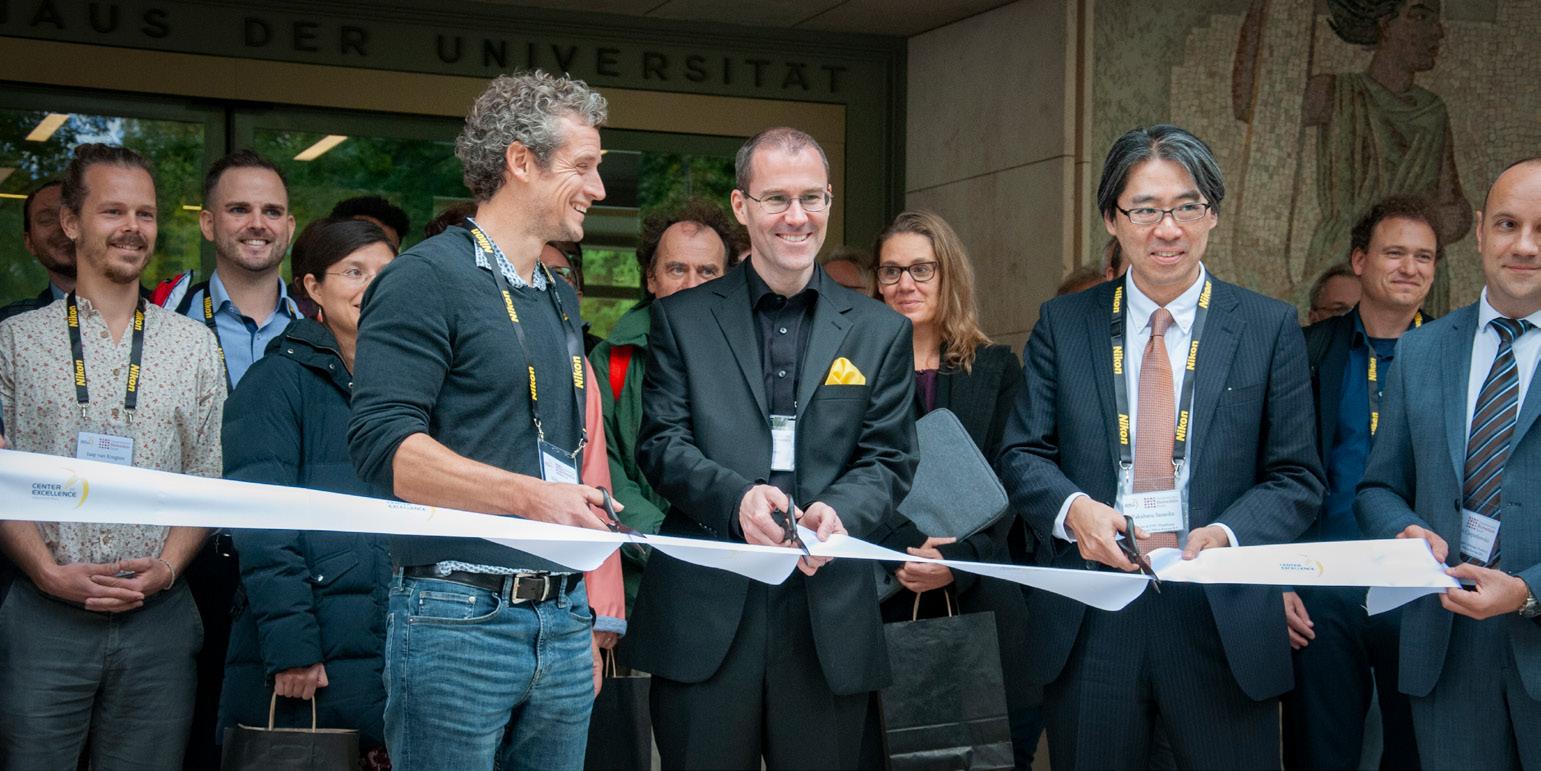
The DBM Core Facility Microscopy has been selected as a Nikon Center of Excellence for translational research on September 2022. The longterm cooperation between Nikon Instruments and the Department of Biomedicine has now become a strong partnership. We are proud of our two facility heads, Mike Abanto and Pascal Lorentz, who have successfully built our facility and transformed it into a competitive and well established microscopy facility.
Success Story
Vision and Mission PhD Club
Research Group at a Glance
Publications
Editorial Congratulations
Events
New Colleagues
30





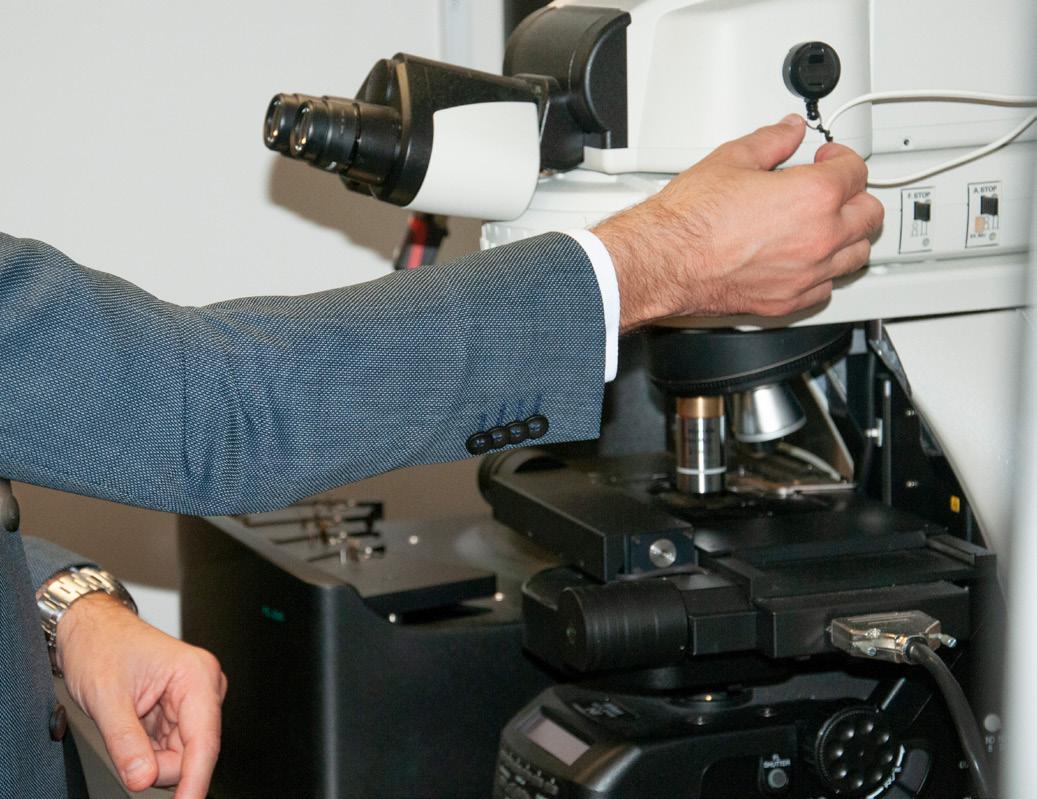

Kick-Off Event Green Labs
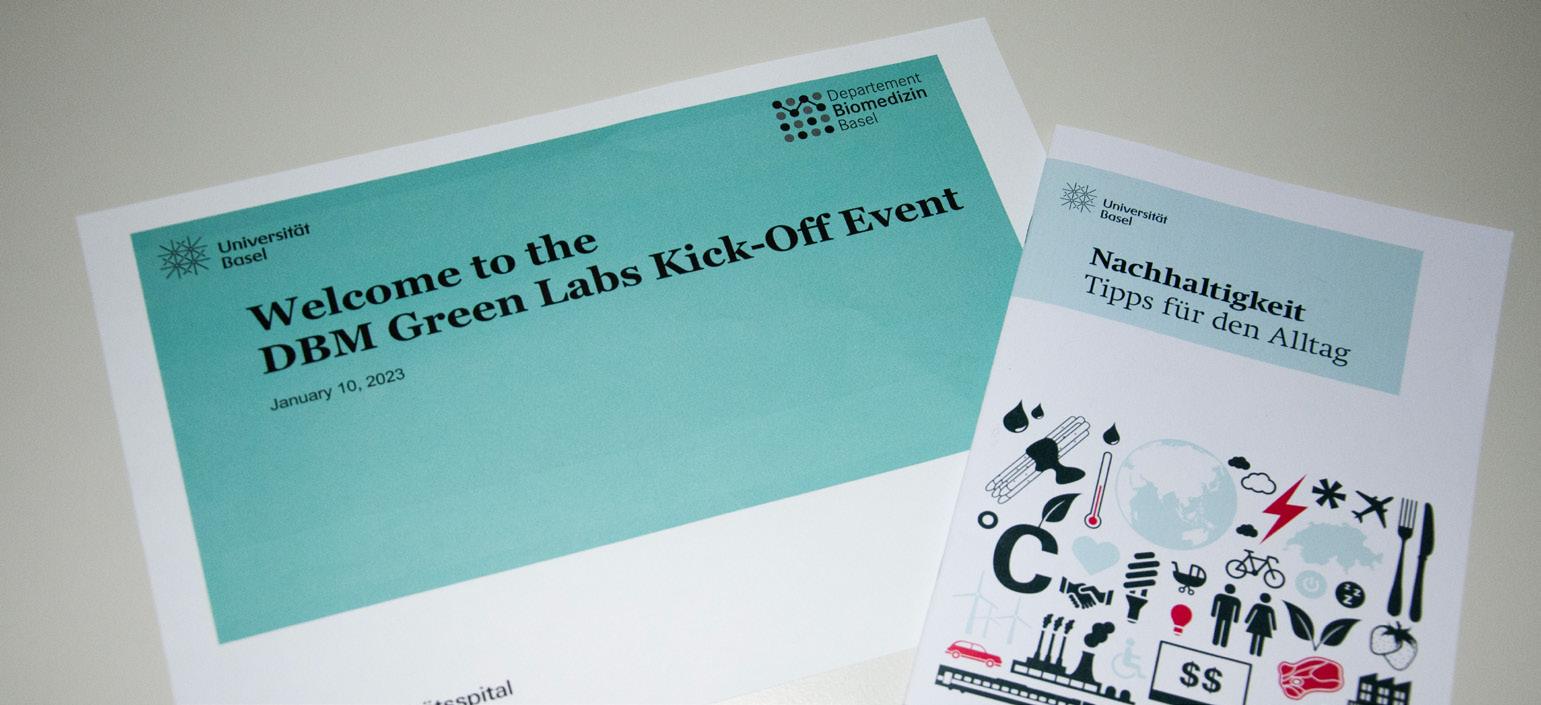
Editorial
The DBM feedback box has revealed that sustainability is a highly requested topic for our employees. In reaction to that, the DBM Green Labs Initiative was kicked off with an event on January 2023. The attendees vividly discussed their ideas for a more sustainable DBM. A wide range of inputs came up – providing more information and educational possibilities to the employees, promoting the communication between the groups for more consolidated ordering of goods, or starting a competition between the groups in a Green Labs-challenge.
We are happy to have many highly motivated people at the DBM, who want to help us become greener in the future!
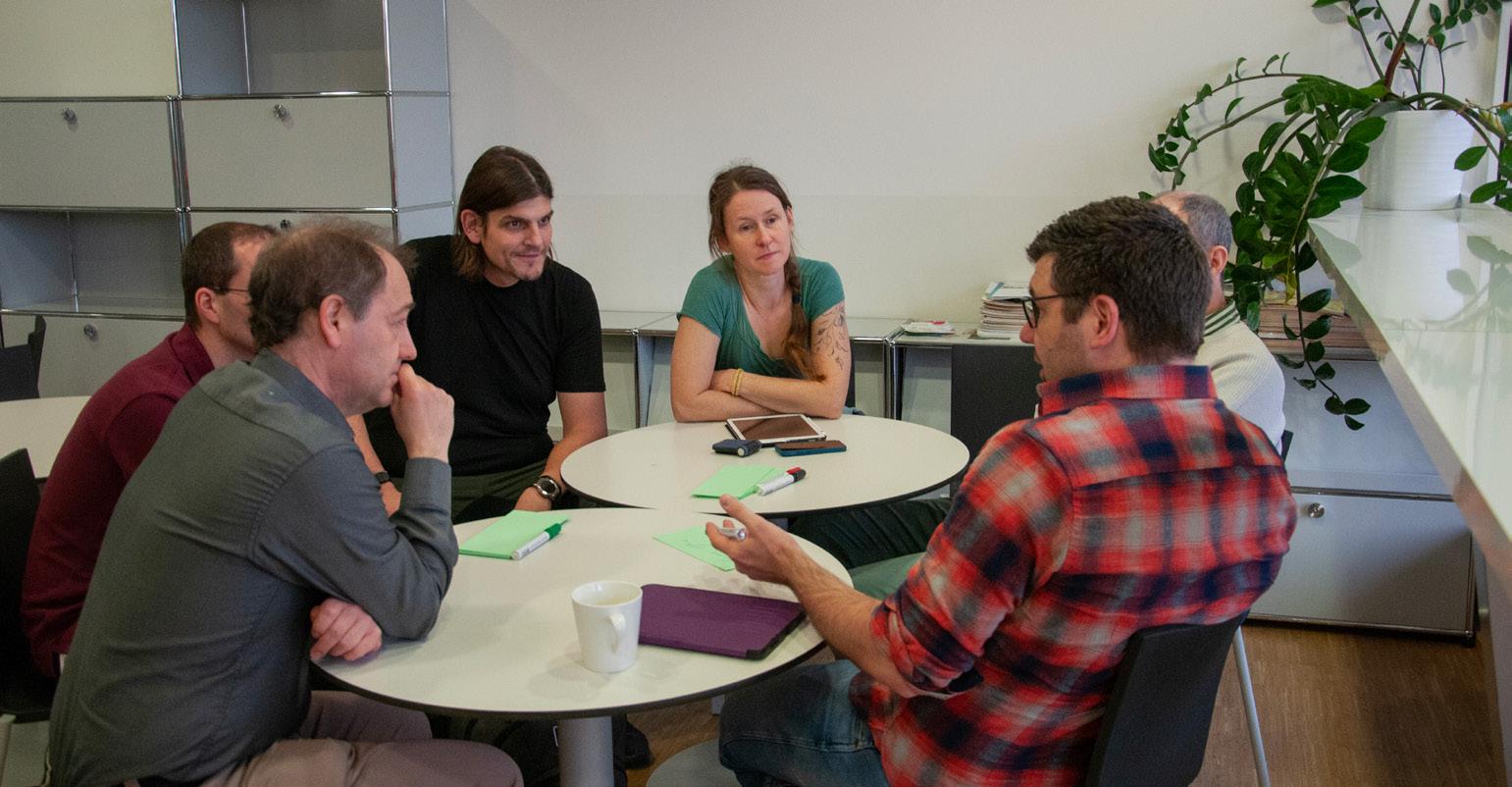
Vision and Mission
PhD Club
Research Group at a Glance

Content Publications
Events
New Colleagues
32
Congratulations Success Story
Look out for the new Sustainability section on the DBM website, which will be online within the next months and where we will keep you up-to-date on the steps towards more sustainability at DBM.
If you would like to receive more information and contribute even more to a sustainable future, you can become part of the Green Labs at DBM by contacting sustainability-dbm@unibas.ch.




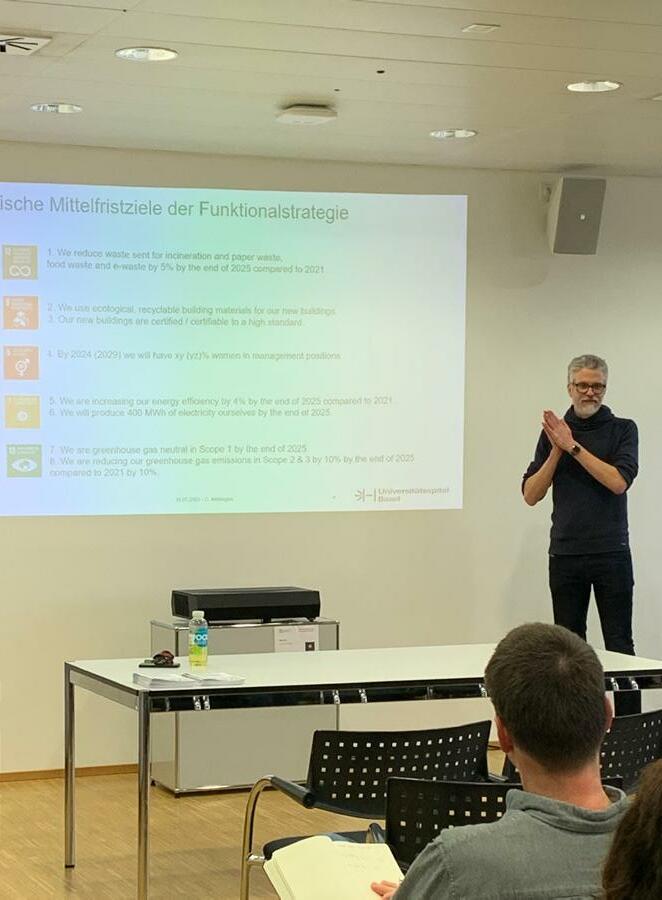
Content
DBM Research Day
After 2 years, the DBM Research Day 2023 could take place again on site and was a complete success. The selected DBM research groups: Primo Schär, Alexander Navarini, Andrea Barbero, Matthias Liechti, Katharina Timper, Anne-Katrin Pröbstel, Marc Donath, Beat Kaufmann



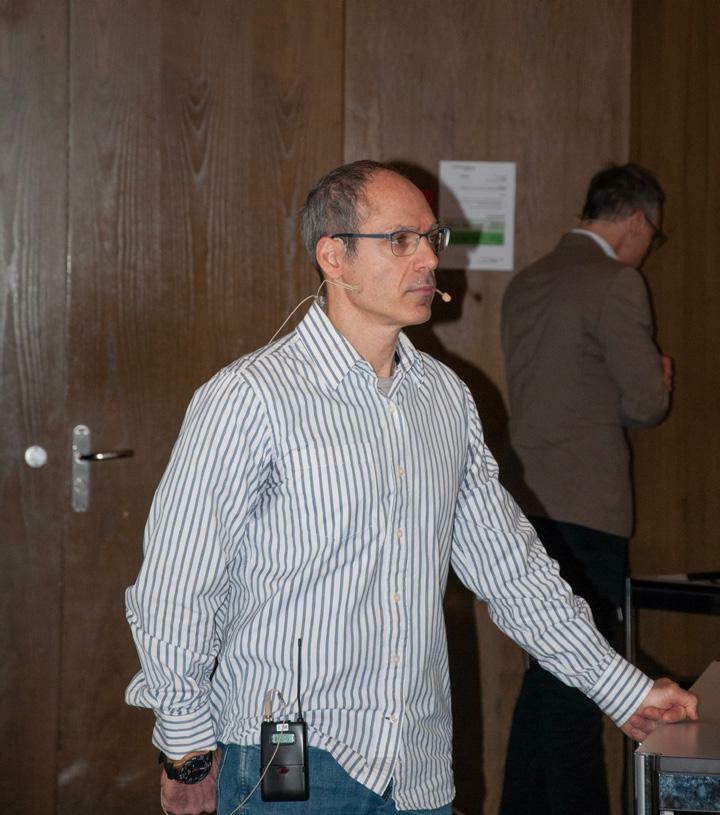

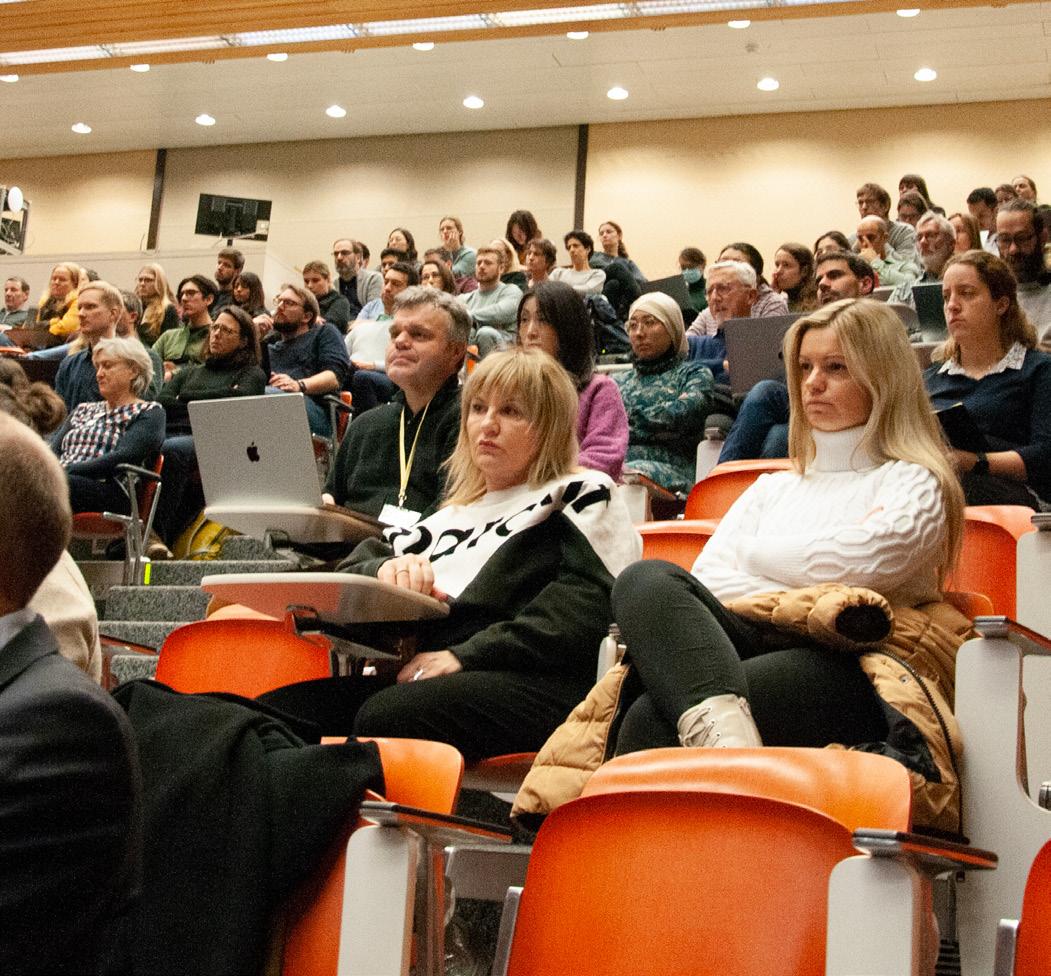
Editorial
Success Story
Vision and Mission
PhD Club
Research Group at a Glance
Publications
Congratulations
Events
New Colleagues
34
and Gregor Hutter presented an update of their research and future plans. All participants enjoyed great presentations and lively scientific discussions. We are already curious who will have the honor next year.

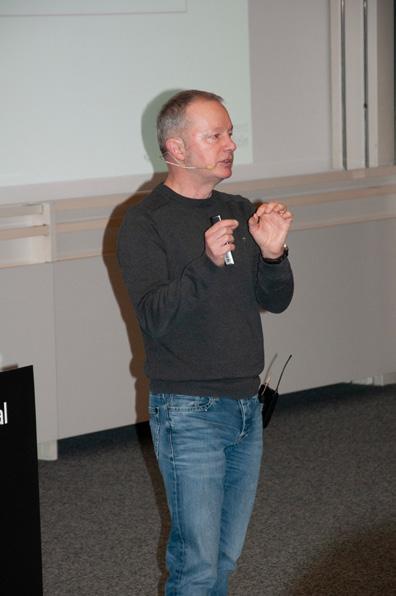



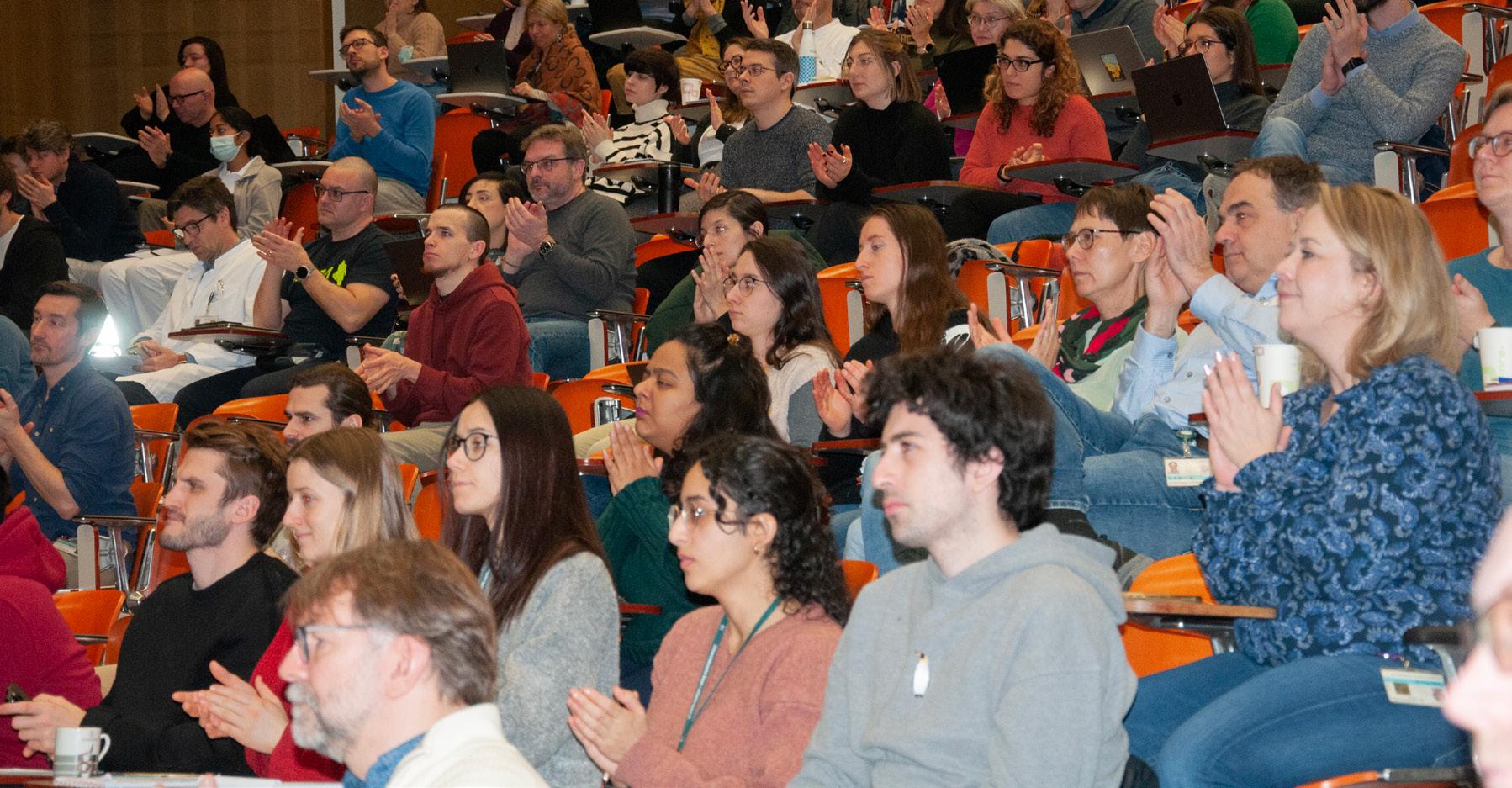


36
Athena’s Journey 09.02.2023 Plenary Assembly 23.03.2023 Content Publications Research Group at a Glance Vision and Mission PhD Club Editorial Congratulations Success Story Events
Upcoming Events
New Colleagues
38 New Colleagues
Content
New Colleagues from August - December
We are delighted to have you among us. We would like to express our warmest welcome and good wishes!
Castellanos-Martínez Ramón
Deck Caroline
Editorial
Success Story
Vision and Mission
PhD Club
Research Group at a Glance
Publications
Congratulations
Events
New Colleagues
Dolgos Robin
Fricker Noëlle
Gonzalez Burgos Martin
Hirsch Laura
Horn Dagmar
Huhle Valerie Helena
Kimmerlin Quentin
Klimke Steffi
Kübler Lukas
Lazzari Melania
Lerner Jasmine
Li Huiying
Lugara Rosamaria
Maeda Takeo
Margenfeld Felix
Paillaud Robert
Preto Elisa
Pretzsch Roxanne
Reinhardt Erik
Saboz Sophie
Schneeberger Jan
Schütz Nicole
Sonsöz Orhan
Studer Hanna
Stumpo Alessandro
Tanner Nina
Trulsson Fredrik
Volken Lea
Zadic Amar
Zaidi Lara
Zeppillo Tommaso
Zuin Jessica
Cell Adhesion
Cartilage Engineering
Translational Genitourinary Cancer Research
DBM Zentrale Dienste Hebelstrasse
Molecular Immune Regulation
Developmental Neurobiology and Regeneration
Allergy and Immunity
Ocular Pharmacology and Physiology
Experimental Hematology
Infection Biology
Hepatology
Visceral Surgery and Precision
Medicine
Experimental Neuroimmunology
Neuromuscular Research
Ovarian Cancer Research
Cancer Immunotherapy
Lehre Fachbereich Anatomie
Bone Regeneration
Cancer Immunology
Experimental Neuroimmunology
Tissue Engineering
Immunobiology
Visceral Surgery and Precision
Medicine
DBM Zentrale Dienste Klingelbergstrasse
Cartilage Engineering
Molecular Immune Regulation
Ovarian Cancer Research
Ocular Pharmacology and Physiology
Hepatology
Experimental Neuroimmunology
Clinical Neuroimmunology
Visceral Surgery and Precision
Medicine
Brain & Sound
Molecular Immune Regulation
40

New Colleagues
The DBM newsletter team would like to thank all the contributors for their work. We hope you enjoyed reading the newsletter, and we wish everyone a great year.
Please feel free to submit your ideas and input for our next issue.
communications-dbm@unibas.ch
Linkedin: Department of Biomedicine

Twitter: @DepBiomedicine
Mastodon @Department_Biomedicine@mstdn.science
42
us on Social Media:
Find
Thank you!
Content Publications Research Group at a Glance Vision and Mission PhD Club Editorial Congratulations Success Story
Events

Follow our mastodon account!
Content
Editorial
Success Story
Vision and Mission
PhD Club
Research Group at a Glance
Publications
Congratulations
Events
New Colleagues
Publisher:
Department of Biomedicine University of Basel
Hebelstrasse 20
4031 Basel
Switzerland
Concept: Xiomara Banholzer
Editorial team:
Xiomara Banholzer, Jael Sulger, Michael Schär from bom! communication
Layout and Photography: Jael Sulger
Contact:
Department of Biomedicine Hebelstrasse 20
4031 Basel
Switzerland
Email: communications-dbm@unibas.ch
© Department of Biomedicine Basel, University of Basel, University Hospitals Basel January 23
44
Publishing Information Imprint
Department of Biomedicine

46
Newsletter January 2023






 Jonas Lötscher
Montage of Z-stack illustrating T cells (blue) attacking tumor cells (white) by forming an immune synapse with LFA-1 (open headpiece conformation – labeled in red).
Jonas Lötscher
Montage of Z-stack illustrating T cells (blue) attacking tumor cells (white) by forming an immune synapse with LFA-1 (open headpiece conformation – labeled in red).












































